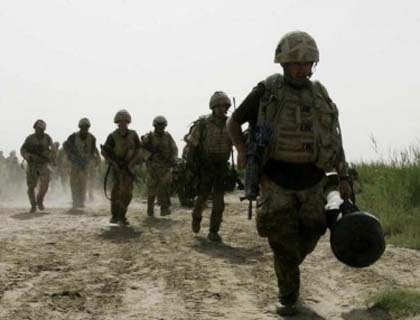The U.S President Barack Obama formally ended the U.S combat mission against Taliban and Al-Qaeda in Afghanistan, during the Christmas-New Year period. The U.S and NATO landed in Afghanistan in late, 2001 to draw the Taliban and Al-Qaeda on the spot court of justice in response to the 9/11 terrorist attack on U.S tower and thus build a democratic state where everyone could enjoy the freedom with peace and justice.
To make this mission successful, the United States deployed more than a hundred and thirty thousand foreign troops across Afghanistan at the peak of the U.S-led operation to eliminate the Taliban threat and lost hundreds of human souls and spent billions of dollars. In those hot times when the U.S was newly facing the Taliban and Al-Qaeda, it announced that the war against terrorism would not take long time. They claimed that the enemies would not be able to face their soldiers in the battlefield! But the United States could not do so and now it is leaving the government in Kabul vulnerable and not fully prepared to combat terrorism.
US President Barack Obama, while speaking on the occasion of U.S mission's end in Afghanistan, acknowledged that there are still concerns about the grim realities of security situation. His reference to the conclusion of America's combat operation has a similar echo. The current government in Afghanistan is not fully functional. The rise in Taliban insurgency has become a grave matter of worry. They can attack targets in the capital, Kabul and almost anywhere. Years of drone attacks, Guantanamo and Osama Bin Laden's killing in Pakistan have not yet defeated them completely.
The year 2014 was reported to be the bloodiest year for Afghan nation, since the United States started its operation against terrorism in late Oct, 2001. The Afghan military forces could not face the Taliban insurgents in the battlefield as claimed. Civilian casualties reached to nearly ten thousand and the number of soldiers who were killed reached to five thousand. These figures tell the story of Taliban resurgence and that they are stronger than at any time, since their removal thirteen years ago.
It is claimed that the government is well-established with impressive credibility to overcome both the internal and external affairs of the state and that the military forces are capable of continuing a strong fight against Taliban and Al-Qaeda elements. Given the last year's record, however, the assertion is not credible onee. Internal rivalries have delayed the formation of a full cabinet. Vacuum in the Defense and Interior ministries is the ultimate matter of worry.
There are still grim speculations about the aftermath of the U.S mission's end in Afghanistan. The central point in these comments is that Afghanistan continues to be a dangerous place, radiating its woes beyond its frontier. Retired Air Commodore John Oddie, former deputy chief of the Australian contingent in Afghanistan has grave doubts over the Afghan force's capacity to protect the nation.
Given the ground realities, the end of the U.S combat mission is more like the Soviet Union's decade long occupation of Afghanistan who were defeated in February 1989 and the country still regrets its consequences.
The main factor behind fewer casualties among US-led foreign forces was that Afghan troops had been deployed to the front line of war against the opposition while international troops were largely confined to their bases. This, too, reminds of the 1980s when Soviet forces previous to their withdrawal stayed in their barracks. Afghan government troops suffered heavy casualties and this adds to their vulnerability against the insurgents.
However, based on our history, the lessons learned suggest our current politicians to adapt comprehensive approaches in response to the ground similar challenges. They must realize that the enemies are still stronger than ever before. They should do most convenient compromises over the long-term presence of NATO and U.S troops in the country so that the history should not repeat another decades of civil war.
In the meantime, there are also other paralyzing challenges pushing the state into the same age of devastation. The endemic corruption and a traditional system of impunity could be the two of many. Corruption remained the silent worst contributor to the rise of instability and worsening security situation that was not addressed under the government of ex-president Hamid Karzia.
The focus to eliminate corruption was the first most concerning demands of the international funding affiliates at the conference of London too. The London conference gave the international community the chance to make clear its continuing commitment to the Afghan people and provided a potentially unique opportunity for Afghan government to make a new start with better governance and less corruption. The international community will be justified in expecting real reforms and genuine change in return for its continued support. The donor countries will not tolerate corruption and bad governance anymore.
Any reduction to the funding resources will contribute to the collapse of government as the country largely depends on international funding aid support for a reason to survive and do not fall again in civil war or in the hands of the Taliban insurgents.
The National Unity Government needs to put tireless efforts to tackle that inherited system of corruption and focus on fixing the dysfunctional government and improve the system of leadership management by introducing the right and capable persons to the right positions and eliminate the power brokers and corrupt officials. Its failure to any of following demands and implementation of a reasonable reform agenda could likely disappoint the donor countries and thus push the country to the age of destruction.

